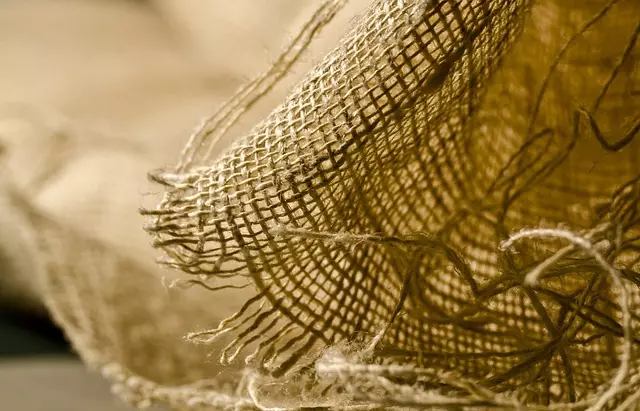Muscle soreness, or DOMS, can hinder exercise performance, typically manifesting 24-72 hours after intense workouts due to muscle fiber damage and inflammation. To address this issue, understanding its causes is key for crafting workout routines that may include natural remedies like Maeng Da and Red Bali kratom, both of which have analgesic properties. Maeng Da, with a balanced alkaloid profile, can provide pain relief and sustained energy levels, potentially helping to maintain workout intensity. On the other hand, Red Bali kratom is sedating and may be more effective for restorative activities like yoga by promoting muscle relaxation and recovery. By carefully considering the distinct effects of these kratom strains alongside a structured workout plan, individuals can manage DOMS and enhance their overall performance. Maeng Da and Red Bali are notable within the Mitragyna speciosa family for their analgesic properties; Maeng Da for its stimulating effects during recovery and Red Bali for its sedative qualities that aid in evening relaxation and sleep. It's essential to use these strains responsibly, adhere to recommended dosages, and seek guidance from healthcare professionals, as they can be integrated into a holistic recovery regimen that includes proper nutrition, hydration, and rest for effective muscle soreness relief. When choosing between Maeng Da and Red Bali, one should consider their personal preferences and timing of consumption based on their daily schedule and fitness goals.
Exploring the realm of physical fitness, muscle soreness is a common challenge that can hinder workout performance. This article delves into effective strategies for mitigating this discomfort, with a particular focus on the interplay between exercise regimens and natural remedies like Maeng Da vs Red Bali Kratom. We will guide you through understanding the mechanics of muscle soreness and its implications on your fitness journey. Furthermore, we’ll provide insights into how customized workout plans, when augmented with these botanicals, can facilitate not only relief from soreness but also promote a more efficient recovery process. Join us as we navigate the benefits of Maeng Da vs Red Bali Kratom and how they can be integrated into your fitness routine for optimal performance and well-being.
- Understanding Muscle Soreness and Its Impact on Workout Performance
- Maeng Da vs Red Bali Kratom: Exploring Their Role in Muscle Soreness Relief
- Tailoring Your Workout Plan with Kratom to Alleviate Soreness and Enhance Recovery
Understanding Muscle Soreness and Its Impact on Workout Performance

Muscle soreness, often referred to as delayed onset muscle soreness (DOMS), can significantly impact an individual’s workout performance. It typically manifests 24 to 72 hours post-exercise, particularly after engaging in unaccustomed activities or with new training intensities. The underlying mechanisms of muscle soreness involve inflammation and damage to the muscle fibers. Understanding the origins of this discomfort is crucial for devising effective workout plans that incorporate exercises like those involving Maeng Da vs Red Bali, two potent strains of kratom known for their analgesic properties. These strains may offer relief from muscle soreness, allowing for continued training or recovery workouts without excessive pain impeding progress. Incorporating these into a customized workout plan can help mitigate the effects of DOMS, ensuring individuals can maintain their exercise regimen while managing discomfort.
When designing a workout plan for those experiencing muscle soreness, it’s important to consider the specific strains and their potential impacts on pain relief and energy levels. Maeng Da kratom, for instance, is celebrated for its balanced alkaloid profile that can alleviate pain while promoting energy, which might be beneficial for maintaining workout intensity. On the other hand, Red Bali kratom is renowned for its sedating effects, which could be more conducive to restorative exercises or yoga. By understanding the interplay between physical exertion and the effects of these strains, individuals can tailor their workouts to balance activity with recovery, effectively managing muscle soreness and optimizing workout performance.
Maeng Da vs Red Bali Kratom: Exploring Their Role in Muscle Soreness Relief

When exploring natural remedies for muscle soreness relief, Maeng Da and Red Bali Kratom have emerged as popular choices among individuals seeking to mitigate post-exercise discomfort. Both strains are derived from the Mitragyna speciosa tree and have been traditionally used for their potential pain-relieving and mood-enhancing effects. Maeng Da, often referred to as ‘Pimp Grade,’ is known for its high alkaloid content, which may contribute to its potent analgesic properties. Users report that Maeng Da can effectively soothe sore muscles, potentially due to its alkaloids like 7-hydroxymitragynine and mitragynine, which are thought to interact with opioid receptors in the brain. On the other hand, Red Bali Kratom is renowned for its calming and sedative effects, which may also aid in muscle recovery. Its alkaloid profile, including 7-hydroxymitragynine and speciogynine, might play a role in its pain-relieving capabilities, offering a balanced blend of relaxation and discomfort relief.
The choice between Maeng Da and Red Bali Kratom for muscle soreness relief often comes down to individual preferences and the specific effects desired. Maeng Da is celebrated for its invigorating and long-lasting analgesic effects, which can be beneficial for those who need to maintain energy levels during recovery. Conversely, Red Bali Kratom may be preferred for its more pronounced sedative qualities, which can be ideal for promoting rest and facilitating a deeper recovery process. It’s important for users to consider their body’s response to these strains, as individual sensitivity to kratom alkaloids can vary significantly. Additionally, users should approach the use of these products with caution, adhering to recommended dosages and consulting with healthcare professionals before incorporating them into a workout recovery regimen. Maeng Da vs Red Bali Kratom represents a choice between stimulating and soothing effects, each with its own role in addressing muscle soreness associated with intense physical activity.
Tailoring Your Workout Plan with Kratom to Alleviate Soreness and Enhance Recovery

When managing muscle soreness, particularly after an intense workout, incorporating natural supplements like Kratom into your recovery routine can be beneficial. Kratom, derived from the leaves of the Mitragyna speciosa tree, is known for its potential to alleviate pain and promote relaxation, which can be crucial for those experiencing post-exercise soreness. Within the Kratom spectrum, strains such as Maeng Da and Red Bali are often highlighted for their analgesic properties. Maeng Da Kratom, recognized for its potency, is believed to provide a balance of stimulating and sedative effects that can aid in both pain relief and energy management during recovery periods. On the other hand, Red Bali Kratom is celebrated for its calming influence, which may help users unwind and soothe sore muscles, potentially enhancing the overall recuperation process.
For individuals looking to tailor their workout recovery plan with Kratom, understanding the nuances between Maeng Da and Red Bali is essential. Maeng Da’s invigorating properties might be more conducive to daytime use, allowing for a balance of pain relief without excessive drowsiness, which can disrupt daily activities. Conversely, Red Bali’s stronger sedative effects may be better suited for evening consumption, supporting a restful night’s sleep and accelerating muscle recovery during off-training hours. When integrating these strains into a workout regimen, it is advisable to start with lower doses to assess individual sensitivity and to consult with a healthcare provider beforehand to ensure safety and efficacy, especially for those new to Kratom use. Proper hydration, nutrition, and rest remain foundational elements of any recovery strategy, complementing the potential benefits of these Kratom strains for optimal muscle soreness relief and enhanced recovery.
Muscle soreness can significantly hinder one’s workout performance, but understanding its nature and mechanisms allows for targeted strategies to alleviate it. Among the natural options available, Maeng Da and Red Bali kratom have garnered attention for their potential role in muscle soreness relief. By carefully integrating these into a personalized workout regimen, individuals can not only mitigate discomfort but also promote efficient recovery. Tailoring your plan to include the right dosage and timing of kratom use can make a substantial difference in managing muscle soreness and maintaining a consistent exercise routine. For those seeking natural remedies to enhance their workouts and recover with less pain, exploring the benefits of Maeng Da vs Red Bali kratom is a prudent step in optimizing your fitness journey.






